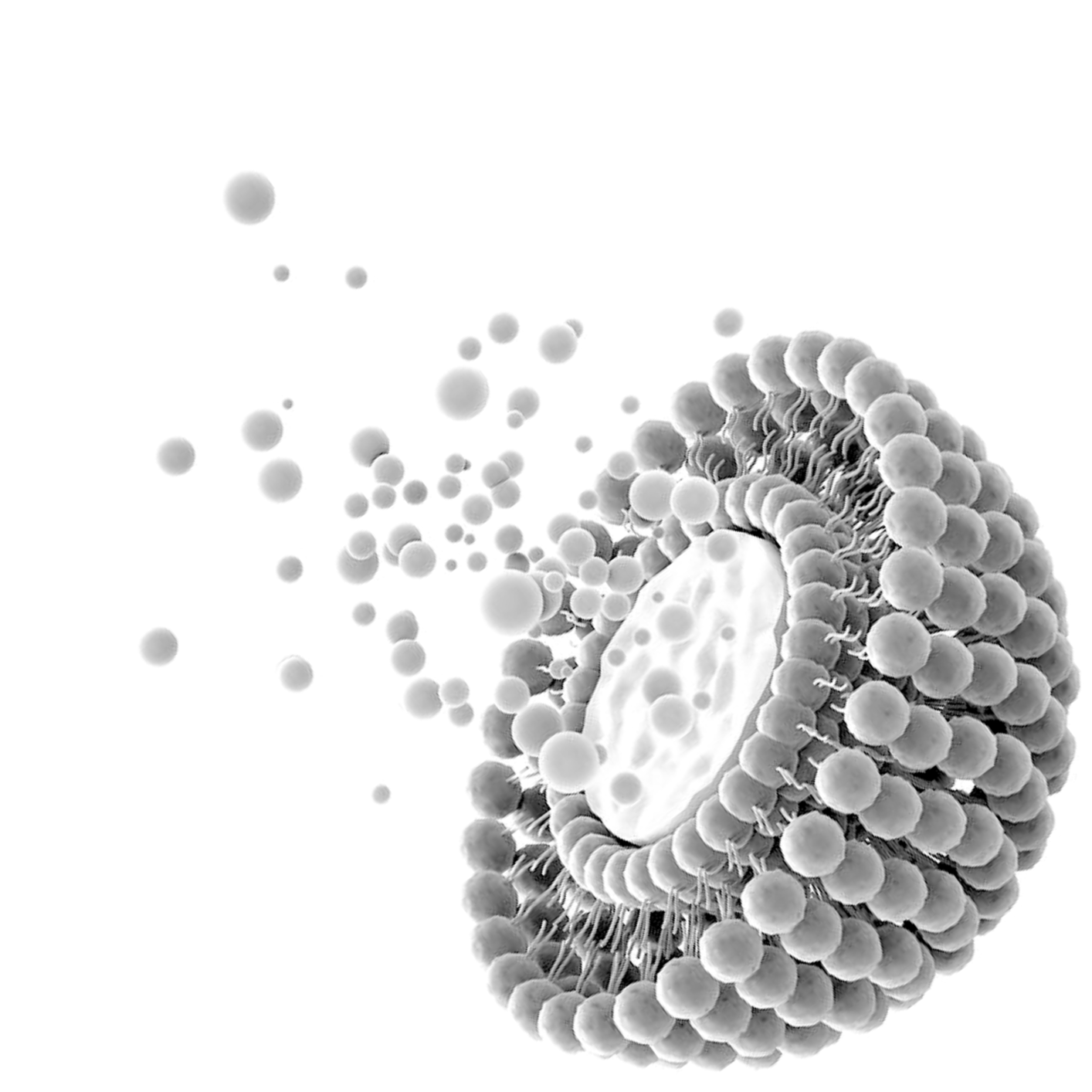

YourHealthBasket stock a wide range of liposomal supplements, but what are liposomes and how do they help in nutrient delivery? Read on to find out more…
What is a liposome?
The word liposome is derived from two Greek words lipos and soma, translating into fat and body, respectively. Liposomes are lipid-based vesicles and consist of at least one lipid bilayer. Liposomes are used primarily to encapsulate bioactive compounds to enhance their bioavailability.
Liposomes are also very useful models for cell membrane research due to their striking similarities with the membranes of many of our bodily cells and are for that reason often used as artificial cells.
Composition
Liposomes are made from lecithin which contain the necessary phospholipids, including phosphatidylcholine, for the formation of liposomal structures. Phospholipids have both a “head” end and a “tail” end.
When placed in a water-based medium these phospholipids join together and form aggregates so that there are two parallel, opposite facing rows of phospholipids with the heads making up the inner and outer surface of the membrane whilst the tails compose the membrane core.
When two rows of phospholipids join together in this way it is referred to as a phospholipid bilayer. With sufficient energy, phospholipid bilayers continue to join together until they eventually form fully closed spheres.
When enough of these phospholipids are joined together so that they have formed individual spheres they are classified as a liposome.
To summarise, liposomes were once just individual phospholipid molecules which joined together to form a phospholipid bilayer until a completely closed, spherical liposome is formed.
Phospholipids form liposomes in this way because of their electrostatic characteristics, there is an opposing charge at the opposite ends of each phospholipid molecule which affects the way they behave in water.
As a result of these opposing charges, the “heads” of phospholipids tend to be more attracted to water, whilst the “tails” tend to repel themselves away from water. It is because of these attracting and repelling forces that phospholipids form liposomes when in a water-based medium. The primary phospholipid used in Lipolife supplements, for example, is phosphatidylcholine which is also the primary phospholipid in human cells. Furthermore, these phospholipids tend to be unsaturated and contain double bonds in their “tails”.
Encapsulation
Due to the polarising properties of phospholipids, which are the core structural materials for liposomes, liposomes can encapsulate both fat-soluble and water-soluble bioactives. Since liposomes are made in water, during formation they are able to encapsulate a percentage of their environment. If there are water soluble bioactives in the environment, Vitamin C for example, then the developing liposomes are able encapsulate the Vitamin C in the water-based core.
If the compound is fat soluble, it will instead integrate itself inside the liposomal membrane, within the tails of the phospholipid bilayer.
Absorption and uptake of liposomes
Oral liposomes, like food particles, travel down the intestinal tract through the stomach and into the small intestine where they are mainly absorbed. The gastrointestinal tract is lined with a layer of mucus which covers finger-like projections called villi. A microscopic focus on these villi reveals they are lined with a monolayer of epithelial cells called enterocytes which are further coated with smaller protrusions called microvilli.
Digested food constituents, including liposomes, must cross these enterocytes before they can enter the liver or the bloodstream where they can then be used by the body. In addition to the enterocytes there are a number of specific mechanisms by which liposomes are absorbed by the cells of intestinal tract.
Cell transport mechanisms such as simple transcellular absorption via diffusion, fusion, lipid endocytosis and receptor mediated endocytosis of liposomes into normal enterocytes are the primary ways in which liposomes are absorbed from the gastrointestinal tract.
Circulation
Intact liposomes that have entered and exited the enterocyte will be quickly taken up by small lymphatic vessels called lacteals and subsequently circulate the lymphatic system. Liposomes can also exit the lymphatic system via the subclavian vein where they enter systemic circulation. In the circulatory system, liposomes can be phagocytosed by cells and the contents of the liposomes incorporated into phagocytic cells or they can simply rupture in circulation releasing their contents in blood. Liposomes and their contents also bioaccumulate in organs, mainly in the liver and spleen but can also accumulate in other organs and tissues.
Summary
By their very nature, liposomes have the extraordinary advantage of being able to carry a wide range of compounds making them the ideal and far superior method for effectively delivering nutrients. What makes liposomes extra special is that they can deliver their contents directly into the cells of the body, protecting the contents from digestion or oxidation before the final delivery and without the consumption of mitochondrial energy.






Accepting payments via


YourHealthBasket © 2025
detoxpeople Ltd
Registered in England & Wales 07156741
VAT reg GB 103 3641 60
Our new practitioner portal has been released and it’s now easier than ever to link a client’s account and provide them with suggestions using our new protocol system.
Convert your current cart into a protocol which can then be assigned to a linked client.